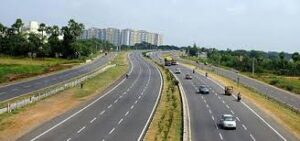Get Professional With Lifelines Of National Economy Lesson Plan

Table of Contents
- This lesson Plan includes:
- Title of the Text Book
- Name of the chapter
- No. of periods required
- General Objective
- Specific Objective
- Pedagogical strategies
- Teaching Aids
- Teaching Points
- Interdisciplinary linkages
- Art Integration
- Classwork
- Homework
- Subject enrichment activity
- Assignments
- Feedback & Remedial teaching plan
- Learning outcomes
- Conclusion
Title of the Text Book:
Contemporary India (ncert)
Name of the chapter:
Chapter 7 – Lifelines of National Economy
No. of periods required: 08
General Objective:
Firstly, to develop students’ interest in the subject.
Secondly, to understand the different means of transportation and communication.
Thirdly, developing scientific temperament among the students.
Fourthly, to develop skills of inquiry, investigation, and analysis.
Finally, to enhance students’ learning ability.
Specific Objective:
The purpose of reading this chapter is to know
- To make the students understand the lifelines of the National Economy.
- Describe the importance of roadways, railways, airways, waterways, and pipelines.
- Explain the importance of transport and communication in the ever-shrinking world.
- Describe the role of trade in the world economic development of a country.
Pedagogical strategies:
Basic Introduction of the chapter
There are many lines in our hands (palms).
The study of these lines is called Palmistry.
People predict your future by seeing these lines.
These lines indicate your health, wealth, education, marriage, children, etc. God knows whether these predictions are right or wrong.
But, even if these predictions are correct, you will agree with me that the most important line is the Lifeline. All other lines depend upon the Lifeline.
Similarly, if we take an Ariel view of our country we will see many lines just like the lines in our hands. What exactly are these lines?
These lines are nothing but the roads and railway tracks that connect one place with the other. Good and fast connectivity saves time and ensures the development and prosperity of the country.
Therefore, we can say that fast means of transport (Road, Rail, Air & Water) and communication are the “LIFELINES OF NATIONAL ECONOMY.”
Explanatory video
The teacher uses the smart board to present a video for the students on the Lifelines of National Economy.
Concept map
Asks the students to prepare a concept map on the related topics from the chapter.
Group Discussion
The teacher tosses a few topics so as to encourage group discussion.
Brainstorming
Topic – Is the world shrinking?
In the class, the teacher gives the above-mentioned topic and allows the students to discuss it freely.
Picture & Data Representation
Pictures and the data given in the NCERT book are discussed for a better understanding of the chapter.
Teaching Aids:
- Blackboard
- Library resources
- Flashcard
- Concept map
- Textbook
Teaching Points
1. Roadways, Railways, Pipelines, Waterways
2. Major sea ports
3. Airways
4. Communication,
5. International trade
6. Tourism as a trade
Interdisciplinary linkages
HISTORY: How was the transportation system evolved? Explain in your own words.
CIVICS: ‘Means of transport and communication has made the world shrinking’. comment
MATHS: Data will be provided from the NCERT book. Students will be required to calculate the percentage contribution of foreign trade. GDP.GEOGRAPHY: You want to know the culture of Europe. How will you gain information about such a distant country?
VALUES INTENDED TO BE INCULCATED
Socio – economic progress
Conserve your Heritage sites
Unity in diversity
Patriotism
Art Integration
The topic for the wall magazine would be ‘Tourism in India’.
Three walls can be prepared by three different groups. Each group will be allotted any one of the following topics:
- Eco-tourism
- Heritage tourism
- Adventure tourism
- cultural tourism
- Medical tourism
- Business tourism
Note: They will collect all data and information either from magazine-like travel and tourism or from the net.
Classwork
Concept Mapping:
The teacher asks the students to make a concept map to understand the importance of transportation.
ii) Flow chart method:
Draw a flow chart showing the types of roads in India.
iii) Class Notes:
Important Class notes with important questions and answers.
Homework
Find out:
1. Is the world really shrinking?
2. Potential of tourism in India.
Assignments:
Plan For general students:
1. What are the merits of Roadways?
2. Mention any three problems faced by the Indian railways?
3. How are roadways better than railways?
4. Waterways are the slowest means of transport but are very important. Comment.
5. Why do the means of transport and communication serve as the lifelines of a nation?
Plan For slow learners:
Q) Which is the most common mode of transport?
a) Roadways b) Railways c) Airways d) Waterways
Q) Which is the cheapest mode of transport?
a) waterways b) airways c) roadways d) pipelines
(ii) Which term is used to describe trade between two or more countries?
a) Internal trade b) External trade c) Local trade d) International trade
Q) Mention any two merits and demerits of Pipelines.
Plan for High Achievers:
1. Roadways have an edge over railways. Comment.
2. The fast means of transportation and communication have made the world shrink. Do you agree with the statement? Discuss.
3. What necessitates the need for transport? Do you agree that efficient means of transport are prerequisites for fast development? Justify.
4. Tourism brings foreign exchange much required for the country. Explain.
Subject enrichment activity
Heritage Quiz
Map Activity.
Feedback & Remedial teaching plan
(I) Adopting new techniques to explain that content which is easier for the students to grasp.
(ii) showing some more relevant videos
(iii )In cases where there would be improvement they should be appreciated in front of the class.
(iv) Special assignments will be provided to low learners.
Learning outcomes
After reading the chapter the students will be able to
- understand the importance of transport, communication, and trade for a country’s progress.
- Get sensitized about the types of roads found in India.
- Get familiar with organizations That construct and maintain them.
- Identify important roads in India.
- Appreciate the tourism industry of India.
- Ponder over the problem of damaging public property like transport.
Conclusion
Hope that the detailed and child-centric lesson plan on the Lifelines of the National Economy will make your class interesting. The Lifelines of National Economy Lesson Plan caters to the need of all types of students. New teachers or teachers from History and Economics backgrounds will also get help from this Lifeline of National Economy Lesson Plan.
Do you think that a few more things should have been added to this lifeline of National Economy? Feel free to write to me.





0 Comments